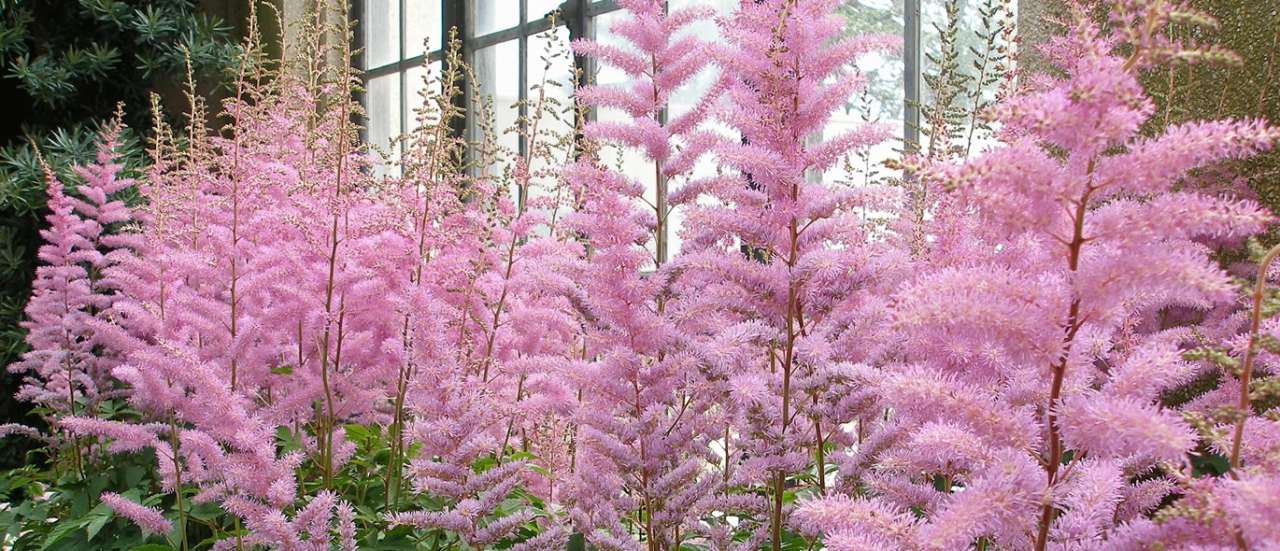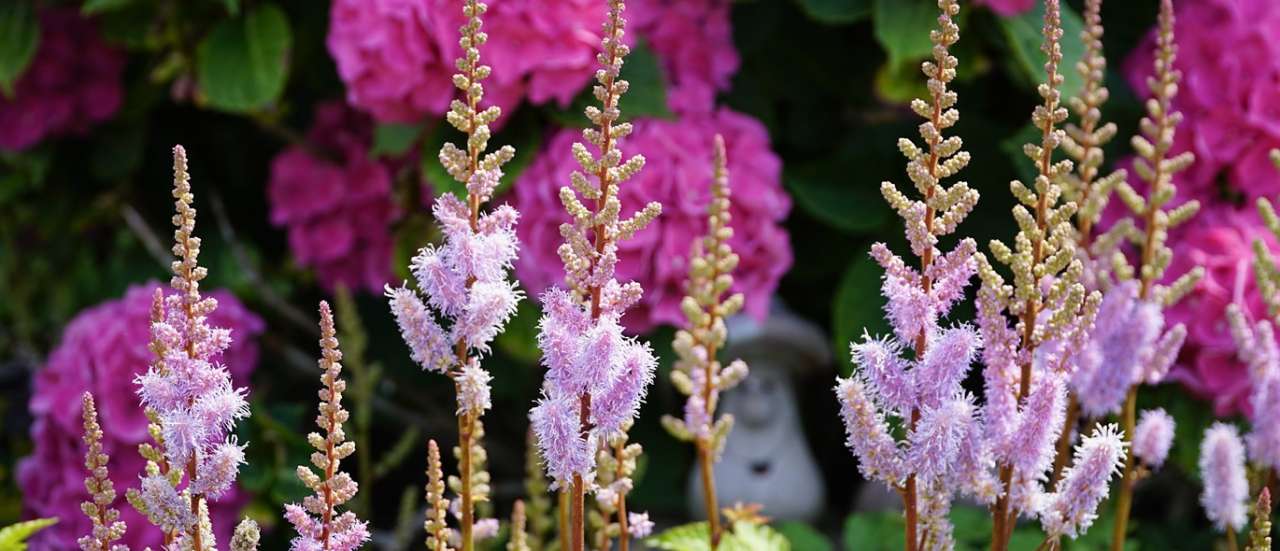Astilbes are often overlooked but they are the perfect plant for growing in a damp area of the garden, as they tend to prefer very moist soils in dappled or partial shade. They look stunning planted en-mass, producing plumes of flowers that range in colour from deep reds, through pinks and purples to white in heights ranging from 30-120cm. The added flower colour is a bonus as many 'shade lovers' tend to be foliage plants.
Astilbes tend to flower from about mid summer with many varieties continuing to flower into the autumn. The drying seed heads can also be left over winter in many cases, for some added interest.
Hardy perennials, they die down in autumn, with foliage emerging again in spring, followed by those summer plumes. Foliage can vary from mid green, to copper-bronze and purple, often turning shades of yellow in autumn. They are naturally at home in shady woodlands and moist grassy areas and so in terms of positioning, they require a damp soil, preferably in dappled shade, with some varieties tolerating full sun. These growing preferences also make them a great addition to bog gardens and pond edges.
Where and How to grow:
As with most perennials and shrubs, astilbes are best planted in spring or autumn. This is generally because the ground is less prone to drying out and so the plants have some time to settle in and establish. You can still plant in summer however but it is important that you water astilbes well through their first summer, probably several times per week, especially during hot and dry weather.
Astilbes need a rich, moist soil so it is a good idea to dig in some compost or well rotted manure prior to planting and ideally you want a position in dappled shade. You can plant in brighter areas, and some varieties tolerate more sunlight, but there is a tendency for leaves to dry and scorch and you will need to be more vigilant in ensuring the soil doesn't dry out.
Planting:
- Dig a hole as deep as the pot they are in and up to twice as wide.
- Add some compost or leaf-mould to the bottom of the hole just to give the plants an additional boost of organic matter.
- Remove the plant from its pot, loosening any roots that may have become pot-bound (it's always good practice to give the pot a good watering an hour or so beforehand).
- Position the root-ball to the centre of the hole, making sure that the ground is level with the soil level in the pot – be sure not to plant it any deeper. The roots will also benefit from a dusting of mycorrhizal fungi which will help the plants establish much quicker.
- Once positioned, you can then start to back-fill the hole, gently firmly the plant in give it a good watering.
Astilbe care:
Water, water and water...Well, in the first year anyway. You'll need to water your newly planted astilbes 2-3 times per week in their first year, especially through the warmer months in order to make sure these plants establish well. Given our Irish climate, particularly up here in the north-west, this really should only be necessary during the summer months (or month, depending on how the season goes!) but it is essential that the ground is kept moist. After the first year, assuming you have selected a position with moisture retentive soil, there should be little ongoing care required at all and watering should only be needed through particularly warm & dry periods, like any 'heatwaves' we may have.
As for anything else, these really are a low-maintenance plant. Follow the guidelines above and these plants will not require any feed and the most you may want to do is cut those flower stems down after flowering or even leave the seed-heads over winter and give them a trim in spring as the next seasons growth begins.
Propagation:
Astilbes can self-seed but this is generally very rare and the usual way to multiply your plant stock is to divide the clumps every 3-4 years. This also invigorates your plants and keeps them healthy. To propagate by division simply fork around the plant and lift the whole clump, you can then tease sections apart if your able. Alternatively you can use two garden forks, back-to-back, push them in where you want to divide the plant and then prize the sections apart.
So there you have it. If you have a shady, damp area in your garden and are looking for something reliable and low maintenance to add some summer colour to that very spot, astilbes may very well be the plants you are looking for. Click here to check out our range online or visit us in store where we are stock a wide range of perennials to suite all garden needs.










